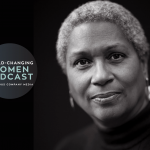Editor’s Note: The following is an adapted excerpt from the new book, “Reinventing Scale-Ups: Radical Ideas for Growing Companies” by Brent Lowe, Travis Marsh, and Susan Basterfield. You can order it on Amazon here.
Tales of organizations making salaries transparent abound, and rightfully so. Discovering what your colleague earns can bring up all sorts of emotions, so it’s no surprise that transparent compensation is often fodder for gossip and judgement. Does your company offer equitable pay for equitable work? How is equitable work measured? Are the measures objective and fair?
Compensation traditionally consists of three pillars: salary, bonus, and equity.
Salaries intend to fairly value an individual’s day-to-day contributions. The process of setting salaries usually gravitates to regimented, inflexible formulas or is hidden to avoid revealing discrepancies and prompting difficult conversations. Bonuses are most often used as part of a carrot-and-stick approach to influencing performance. They also mitigate the risk of expenses outpacing revenues. Ownership and equity aim to reward risk-taking, build a sense of personal connection, and retain team members.
Although logical in theory, you may sense how these three compensation pillars feel out of step with today’s business world. The traditional approach to compensation is deeply rooted in putting human resources into boxes to be measured and priced.
In self-managed organizations, setting compensation tends to rely much more on transparency, crowd-sourced data, and negotiation. Many progressive organizations have removed bonus plans altogether, choosing instead to use company-wide profit sharing. Company ownership becomes rebalanced to better represent both individual contributions and risk, with greater fairness applied in determining how the pie gets sliced.
You and your team will need to create a compensation system that works best for your organization. Our goal here is to share examples of compensation approaches which challenge the status quo.
Morning Star: Self-set salaries
Morning Star, the world’s leading tomato-ingredient processing company, is seen as a trailblazer in many areas of self management. The company uses a self-set salary process in which each team of colleagues is advised on the total percentage of pay adjustment available. It’s up to each individual to make his or her own decision about what personal adjustment is appropriate. They then justify their decisions, send them to a number of colleagues for feedback, and advocate for their final numbers.
The Moment: Capability mapping
The Moment is a 10-person and growing consulting firm led by three founders. The team is internally transparent with compensation and embraces many other progressive philosophies. As the team expanded, they launched a project to design a scalable compensation approach. They developed a comprehensive competency rubric consisting of 26 different measures that allow each team member to plot his or her personal development, both as a consultant and a contributor to the business.
Individuals then completed self-assessments against the 26 measures and asked three colleagues, including one founder, for input. The four colleagues then met, shared reflections, and discussed the ratings. At his or her discretion, the individual then updated the self-assessment based on the feedback received. The final ratings mapped to a compensation matrix, and all final self-ratings were made visible to the entire team.
In this first attempt at developing an open compensation framework, the process turned out to be beneficial, but not for the reasons intended. The founders were uncomfortable with the final ratings, realizing team members had differing interpretations of the rubric. Rather than using the data directly, the founders made final compensation decisions with the data as a significant input. They were transparent with the team every step of the journey and sought advice regularly. In the end, the team had the opportunity to travel the compensation journey with the founders, gain meaningful feedback from colleagues, strengthen their working relationships, and feel even greater ownership for the business.
Going forward, the team is committed to build on their learning and refine the process. They are now exploring software solutions to help remove personal bias from self-assessments. In reflection, co-founder Greg Judelman says: “Designing a scalable compensation approach has taken us more time than anticipated and required personal courage by everyone involved. But it’s been worth it — we’ve grown and gelled as a team and have a clear sense of the collective values that we’re working and living for.”
Fitzii: Collaborative salary-setting
All employees at the hiring services firm Fitzii know each other’s salaries, and detailed company financials are available for review each month. After his or her first year, each team member is eligible to participate in the annual Salary Advice Process, where they seek the advice of their peers, investigate the market, and understand how their compensations fit within the budget. Equipped with that information, individuals decide on their salary and publish their reasoning. Interestingly, team members routinely pay themselves less (not more) than they would have had they had bosses.
Buffer: Fully transparent compensation
Social media firm Buffer published an instructive article on how it calculates team salaries. The company factors in market data, location, cost of living, role value, experience, loyalty, and risk tolerance. This system makes salary calculations fair and transparent. It also gives team members direct visibility on how they can increase their compensation. Buffer also publishes everyone’s salary publicly on their website.
Enspiral: Needs-based compensation
At Enspiral, a virtual and physical network of impact-driven businesses, small teams known as livelihood pods have open conversations about personal needs. Based on the concept of abundance, everyone requests and receives the minimum they need to sustain themselves. Two examples of livelihood pods are Root Systems (software developers) and Golden Pandas (facilitators, consultants, and teachers). As revenues generated by the livelihood pods increase, compensation conversations follow.
The Root Systems livelihood pod uses the following formula for calculating a month’s pay: Base Income + Business Viability Bonus + Performance Bonus. Base Income is the monthly amount a core member will always receive, no matter how many hours her or she works. The Business Viability Bonus is an additional amount paid based on how sustainable the team perceives the business to be. A Performance Bonus is added based on work that brings money to the organization.
How exactly these different amounts are calculated depends on the team’s current financial buffer and the activity types conducted during the month.
HolacracyOne: Crowd-sourced compensation
HolacracyOne is the consulting and training company behind the Holacracy self-management system. At HolacracyOne, co-workers fill out a survey for all their colleagues, consisting of only two ratings:
- This person contributes (much) more or (much) less than me (on a scale from +3 to -3)
- This person has a good basis to evaluate me (on a scale of 1 to 5)
An algorithm is used to process the data collected, and colleagues are grouped into salary buckets. As a result, “The more experienced, knowledgeable and hard-working people land in the higher buckets that earn bigger salaries; the more junior, less experienced colleagues naturally gravitate toward buckets with lower salaries,” the company says.
Valve: Centralized compensation team
The team at software company Valve takes a more centralized approach to compensation. A designated group of employees (which changes over time) interviews everyone in the company annually. They ask for feedback on each individual the interviewee has worked with over the past year. The information collected is used primarily for constructive feedback. They also ask the individual to rank each member of his or her own project or product group on four metrics:
- Skill level/technical ability
- Productivity/output,
- Group contribution
- Product contribution
Each of these metrics is given equal weight in compiling a stack ranking of all employees and is used to determine compensation.
Miovision: Compensation sponsorship
Each member of the Miovision team has someone who sponsors their compensation. It’s up to the compensation sponsors throughout the organization to ensure team members are paid fairly. When compensation issues arise, the sponsor works through the issue with a shared responsibility to the individual and the software company.
A few words on ownership
When a team is comprised of the right people who communicate openly, make commitments to one another, and support each other’s growth, there is the possibility of a different sort of relationship to risk and ownership. If a founder believes in the importance and value of nurturing a creative spirit and energy — their own and others’ — their philosophies on ownership can play an important role. We can’t ignore or discount the emotional labor most founders endure when building an organization — and the feeling of responsibility and accountability they have for the livelihood of their colleagues. Collectively reconciling our relationship to money and ownership can be the single most important action we take to freeing up creativity and entrepreneurship in our organizations.
Entrepreneur, author and lecturer Mike Moyer has written extensively about a philosophy for fairly distributing equity. Slicing Pie is “a simple formula based on the principle that a person’s percent share of the equity should always be equal to that person’s share of the at-risk contributions. At-risk contributions include time, money, ideas, relationships, supplies, equipment, facilities or anything else someone provides without full payment of its fair market value.”
This means anyone who risks more, such as a founder whose salary goes unpaid early on, would be compensated over time with a greater share of the profit. This approach provides ways to accommodate colleagues with differing risk profiles. It also allows people to evolve their equity agreements when their risk profiles shift due to other life changes.
Beyond compensation
These philosophies can be applied to external relationships, too. For example, knowing that transparency breeds trust, Buffer shares its pricing model online so customers know exactly where their money goes.
Some workshop providers transparently share costs with participants. In this case, a workshop fee is published up front, but it’s not until after the event that all revenues and expenses are finalized. Any shortfall gets divided by the number of participants and each participant chooses whether or not to pay their share of the outstanding balance.
Getting started
Discussing compensation is challenging, even in teams where psychological safety has been well established. If you are ready to start exploring new and different compensation approaches, here are some suggestions for the journey.
- Invite input from all those impacted.
- Make sure to get expert input around compliance and legal issues.
- Be clear on who the decision-maker is for any change.
- Be transparent about the decision-making process, and provide updates each step of the way.
- Establish guiding principles for compensation design.
- Provide ample time for the process to unfold without undue pressure.
- Tune into how easily old compensation paradigms can influence thinking.
- Consider using a third-party facilitator to help guide the process.
There are endless ways to start experimenting with broadening financial transparency in your value exchanges with customers, suppliers, and other stakeholders. Where might you try out some different approaches?





